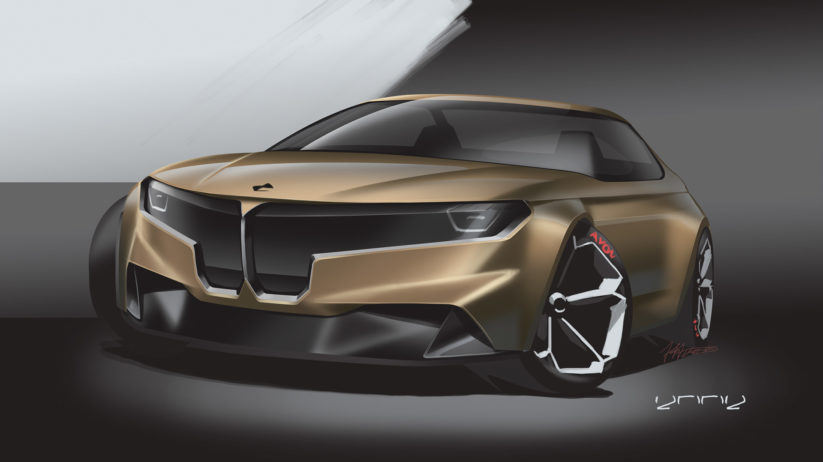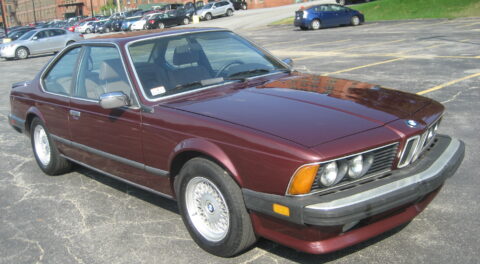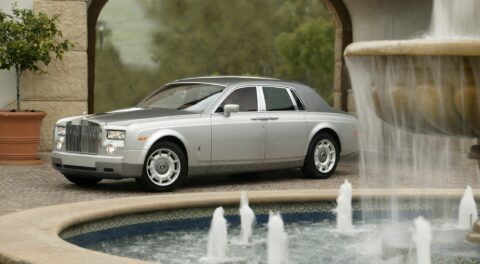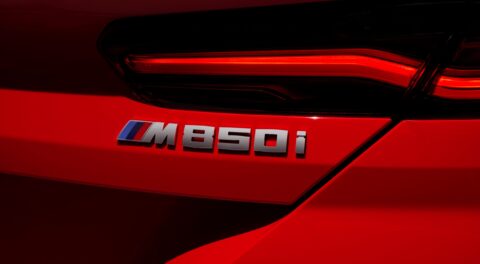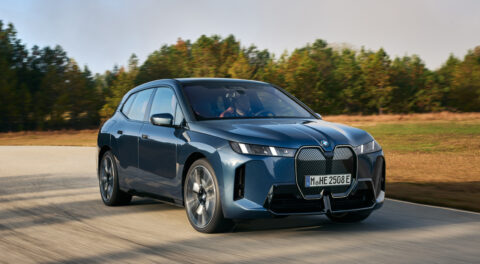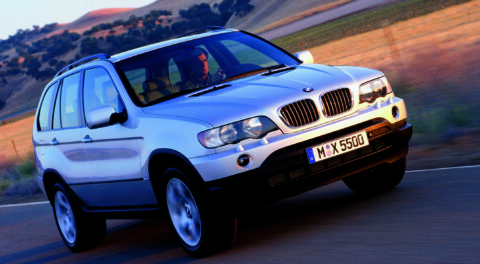BMW design is fluid and ever-changing. If we look at the evolution of the brand from past to present, we can really get a grasp on how industry trends have shaped the cars of today. Sure, we’ve axed circular, dim, (in the U.S. sealed-beam) halogen headlights for blinding, angular LEDs, but some staples such as the signature kidney grilles will always be there to maintain the true-to-brand essence of BMW. If we’ve learned anything, it’s that BMWs do not age—they simply become timeless.
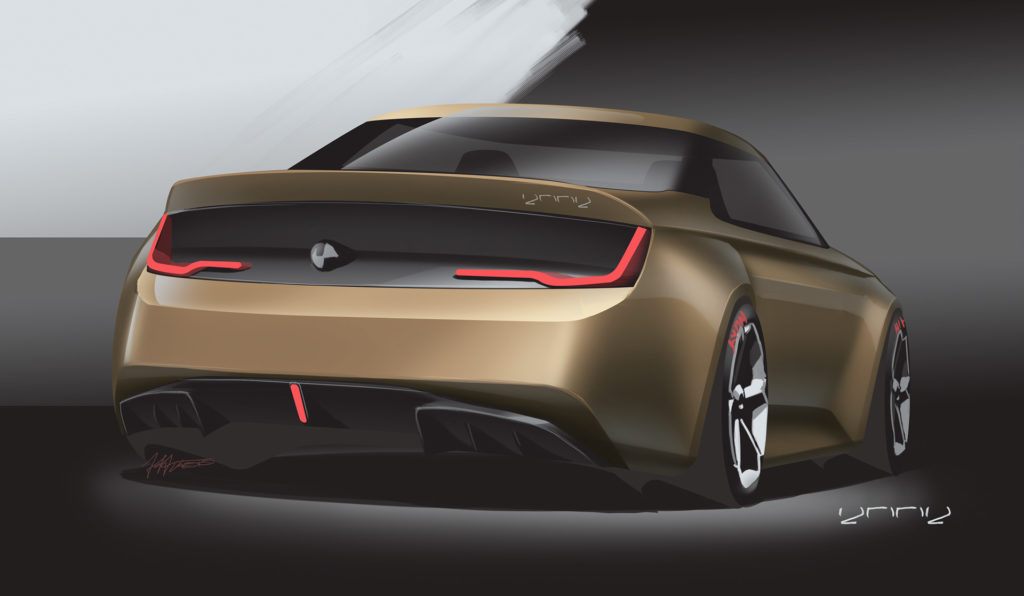
Kobayashi’s render shows a multi-generational approach to BMW design.
While the automotive industry remains quiet during the quarantine, many enthusiasts have taken it upon themselves to create their own source of automotive discussion. A break in new vehicle development means that now is a good time to reflect and build upon what already exists in the automotive realm—and predict how it may influence the future of BMW. With an influx of spare time to stop and ponder over these, “what if” thoughts, many artists have taken to the drawing board to sketch out some; in particular, this modernized, multi-generational 2002 render by Naoto Kobayashi.
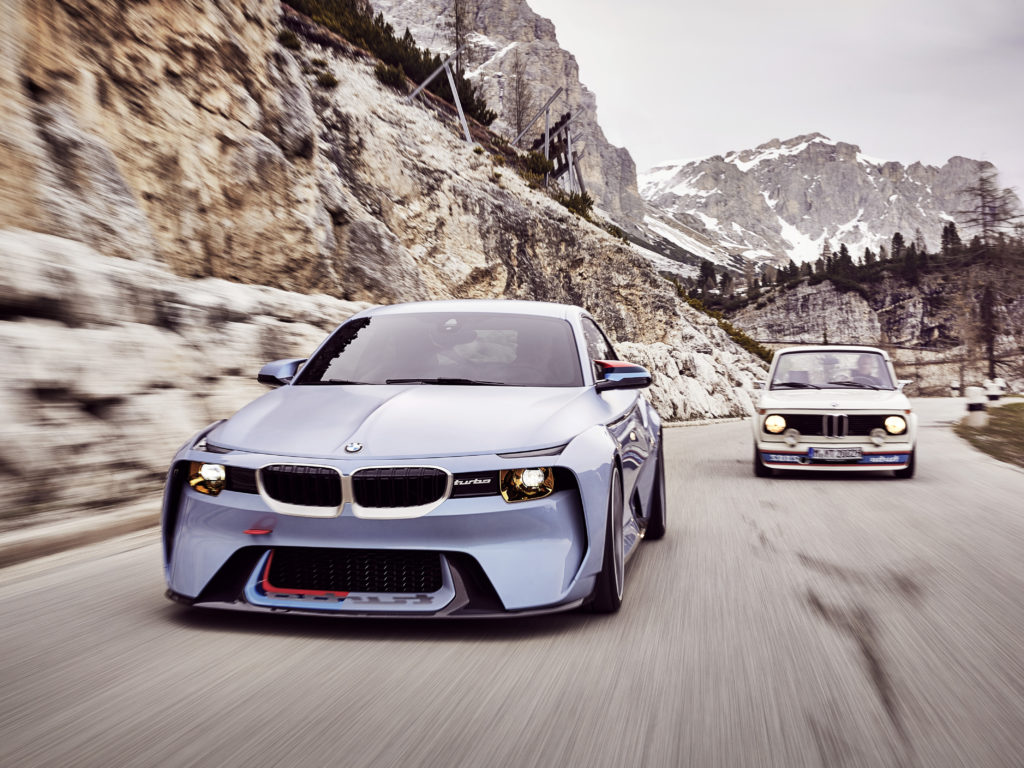
Upon first glance, Kobayashi’s sleek render is a seemingly perfect synthesis of the past, present, and perceived future of BMW design. Aptly named the i2002 by Kobayashi, the render aims to emulate BMW’s original flagship model, the 2002.
This specific render loosely pulls design cues from the 2002, like the stretched horizontal front grille, singular headlight housing duo, widened fenders, and aggressive body kit, characterized by the Turbo variant. Continuing with the 2002 motif, the square headlight cutouts scream 3.0 CSL Hommage—a special one-off concept car debuted by BMW in 2016 to honor the classic race car of the same name from the 1970s.
While Kobayashi’s digital render lacks the decals and Jäigermeister livery found on the Turbomeister Edition 2002 Hommage, it does bear a similar expansive lower grille. Both the 3.0 CSL Hommage and Turbomeister Hommage were developed to honor 50 years of success brought upon the brand by Europe’s first production-built turbocharged car, the 2002, and mark a historic milestone for not only the engineering accomplishments of the time, but also the creation of a transcendent brand identity. The 2002 marque cemented BMW as a brand for enthusiasts, securing the vision of performance and luxury that we now have today. The digital sketch, however, does not appear to exclusively draw inspiration from BMW’s first successful sport compact.
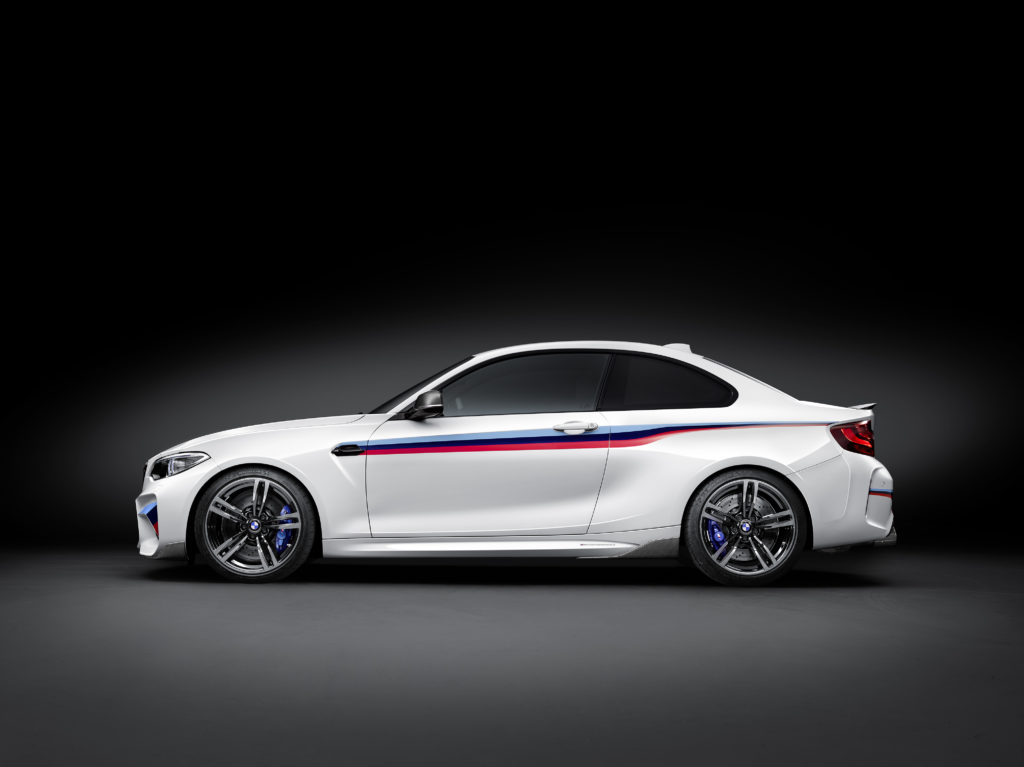
The profile of the M2 Coupe.
The render also appears to be imbued with 2 Series DNA, a logical stepping stone between BMW’s past, present, and future generations of sporty sedans. With a similar body style, fierce performance, and ruggedly individualistic driving personality, it makes perfect sense that the 2 Series be crowned the 2002’s closest relative—they command the same essence. Thus, Kobayashi’s decision to link the two and build upon this foundation in his render makes the fusion that much better. The M2’s DNA can be seen in the wide wheel arches, rounded rear fascia, and aggressive diffuser with quad-exit exhaust cutouts of the digital manifestation.
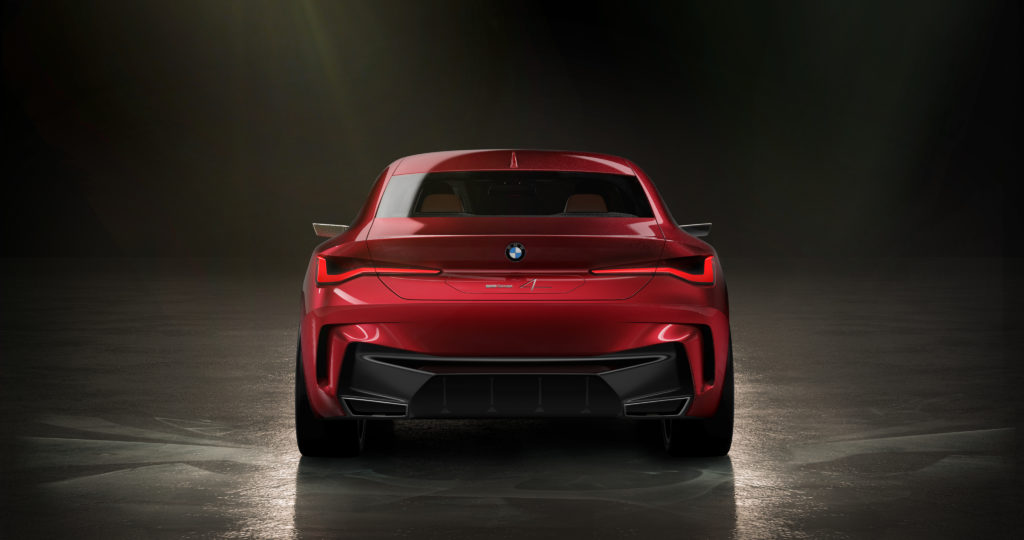
The angular styling of the Concept 4’s taillights.
Though not initially prominent, a second glance of the render reveals some design cues that are reminiscent of BMW i, hence the designation in the name of Kobayashi’s concept; i2002. While the outlines of the taillights and large kidneys are not necessarily exclusive to one specific BMW model, they are quite similar to the angular lines and waffle-iron kidney grilles of BMW’s Concept 4 and i4 prototypes. The contrast between sharp angles and rounded, almost wavy edges also gives the render a touch of the i8’s plug-in hybrid supercar presence, even if it is just a small hint.
Kobayashi’s concept effectively ties together multiple divisions and generations of BMW design of both past and present, offering us a glimpse at the future of automotive design, but the question remains—which elements, if any, will come to fruition?—Malia Murphy
[Photos courtesy BMW AG, Naoto Kobayashi.]

